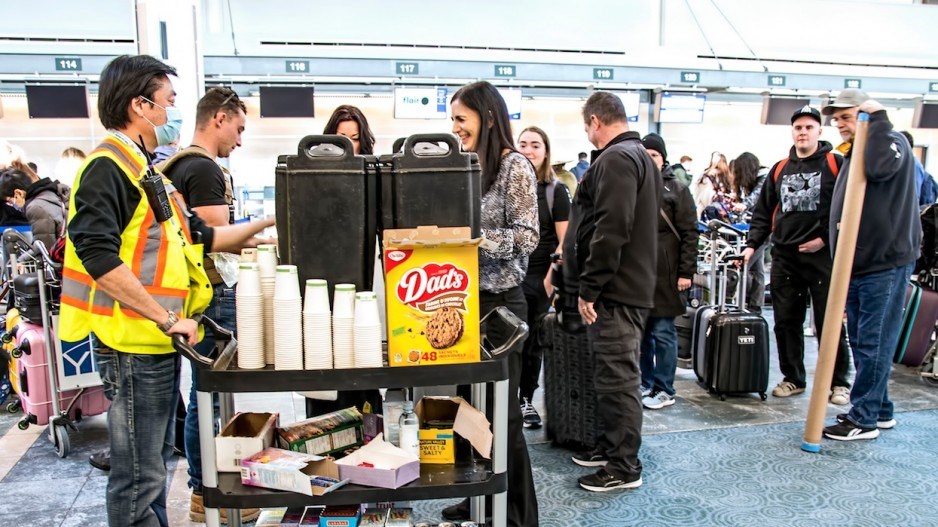Traveller experiences with lost luggage and delayed or cancelled flights, and media coverage of airport chaos during the holiday season may be behind the rise in demand for travel insurance, according to a new survey.
About 42 per cent of Canadian travellers said in November and December that they were more likely to purchase travel insurance when planning a trip than in the past, according to the 2023 Blue Cross Travel Survey conducted by Research + Knowledge + Insight that was released this morning.
That survey found 58 per cent of 2,186 Canadians polled had experienced travel-related issues, including an airline cancelling or changing flights (24 per cent), lost luggage (20 per cent), damaged baggage (16 per cent) or needing medical attention (13 per cent.)
British Columbians, the survey found, were Canada’s most risk-averse residents, with 57 per cent saying that they would always or sometimes purchase travel insurance when planning a trip – the highest among provinces.
About 34 per cent of B.C. residents surveyed said they always bought travel insurance when they went on trips, which was also a higher proportion than in other provinces. Canada-wide, 26 per cent of respondents said that they always bought travel insurance when going on a trip.
The swing in sentiment toward buying insurance comes despite soaring insurance rates.
A report last month from the insurance-comparison website Ratesdotca found that insurance rates soared during the pandemic and have continued to rise far faster than inflation.
Rates for a single person’s trip cancellation, on average, jumped 1,139 per cent, year-over-year in the third quarter of 2021, Ratesdotca said. Insurance rates continued to rise through the rest of 2021 and 2022, and in the fourth quarter of 2022 were up 15 per cent, from the same quarter one year earlier.
Rates for insurance to cancel all-inclusive vacations and for trip cancellation for an entire family showed a similar more-than-1,000-per-cent increase in the third quarter of 2021, which was in the depths of the pandemic, and then more modest yet substantial increases through the end of last year.



